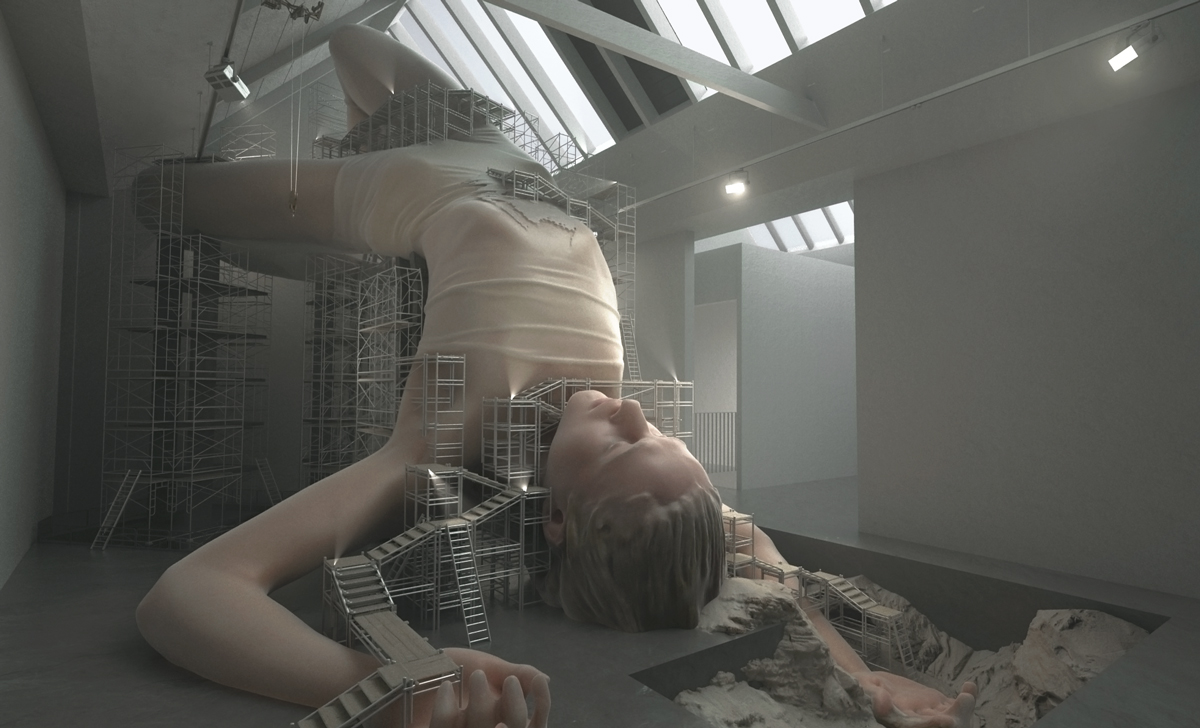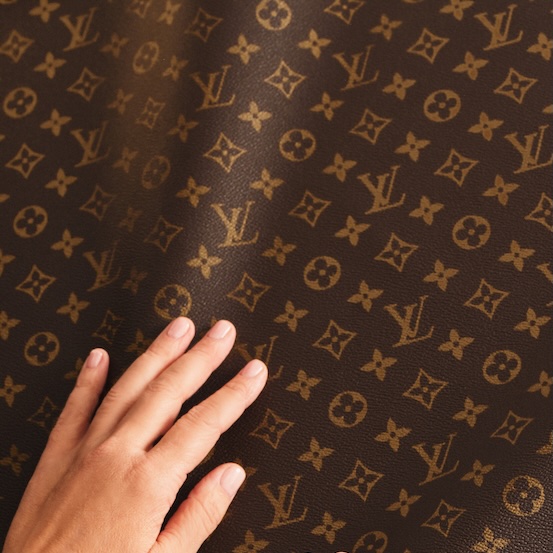Where everyone sees a body, some see an object.
Where everyone sees a body, some see an object.

Photography by Enes Gùç and Evelyn Bencicova
Photography by Enes Gùç and Evelyn Bencicova
Photography: Enes Gùç and Evelyn Bencicova (for Barbara Thumm Gallery).
“In my early twenties, it had never occurred to me that the women who gained their power from beauty were indebted to the men whose desire granted them that power in the first place. Those men were the ones in control, not the women the world fawned over. Facing the reality of the dynamics at play would have meant admitting how limited my power really was — how limited any woman’s power is when she survives and even succeeds in the world as a thing to be looked at.” This is how Emily Ratajkowski, the model whose participation in the music video for Robin Thicke's song Blurred Lines (2013) catapulted her to planetary fame, analyses the madness that has been her last ten years, after half the world had “fallen in love” with the woman smiling on screen, with a breathtaking body. “I didn't have any real power as the naked girl dancing around in his music video. I was nothing more than the hired mannequin.” The confessions are taken from the book My Body, released in 2021, which intends to put a stop to the idea that Emily is just a body — and that this body, this "object" at the expense of which she has grown rich, is something she wants to win back for herself. “I've felt objectified and limited by my position in the world as a so-called sex symbol. I've capitalized on my body within the confines of a cis-hetero, capitalist, patriarchal world, one in which beauty and sex appeal are valued solely through the satisfaction of the male gaze.” The outburst was met with applause, but some have criticized the author for locking herself into solipsistic arguments. One thing is certain: the objectification of the female body is a fact, and My Body served to bring it back to the table.
Women are taught to accept that sooner or later they must become passive objects of the male gaze. What is the reason for this objectification of the female body? We put the question to Filipa Jardim da Silva, clinical psychologist, coach and founder of Academia Transformar. “Fortunately this pattern of education is changing. These classic and traditional teachings come from religious and social doctrines in which the woman should take a secondary role in life in general. She should accept the choices of her family, the man she would marry, should behave as she was told, should please the other, should be fertile and take care of her children. The objectification of the female body was thus a consequence of the general objectification and the passive place and lack of individual freedom that women occupied for many years. The last decades have seen a movement towards liberation, individualization and female empowerment, in which neither the woman as a person nor her body can be expected to be passive objects of the male gaze.” Still, there is a certain embarrassment not only with the power of the female body, but also with the idea that a naked body, in general, is offensive, or even diabolical. “It’s many centuries of limiting beliefs and ideas proliferated on the back of religious doctrines, educational styles and social conduct, in which the exposure of the female body has always been considered incorrect or unacceptable, a sign of vanity or lack of modesty and credibility, even by a woman. If, on the one hand, the female body has always been more explored and even appreciated from an artistic point of view, it has also always been more subject to comments, criticism and more accentuated stereotypes. These heritages prevail until today. Right and wrong, beautiful and ugly, harmonious and asymmetrical accompany the look with which the woman looks at her own body and with which society, especially Western society, looks at the female body.”
In fact, we are still not able to free our thoughts from judgements when we observe a nude. Even more so if it is a female nude. John Berger, art critic, painter, writer and, probably, one of the greatest thinkers of the last century, wrote about this in his book Ways of Seeing: “You painted a naked woman because you enjoyed looking at her, put a mirror in her hand and you called the painting Vanity, thus morally condemning the woman whose nakedness you had depicted for your own pleasure.” From this come feelings of guilt, anger, and a total lack of identification with what we see in the mirror. We cannot like what we see, nor can we see what we like. And if this has always been the case, the boom of technology has made this mismatch increase. The constant bombardment of images that we receive daily makes the idea of the body as an object intensify, instead of being diluted. The body today largely defines the way our lives “should” be lived. Without a body that we feel good about, it seems that our lives are not okay. From this comes a host of problems and worries, almost all linked to the pressure to have “the right body.” Is it possible to see our body as an object and still have a healthy relationship with it? Filipa Jardim da Silva has some thoughts: “It is expected to look at our body as an extension and part of us. We are expected to cultivate a healthy relationship with our body, in which we enhance its functionality and aesthetics, without persisting in a utopian ideal that makes us ill and without embracing dated stereotypes that only intoxicate and limit us. The body is our means of transport through life. It is through our body that we also express ourselves, that we feel the touch of the other, that we explore places, that we regulate emotions. This is why it is so important that we learn to create a more balanced and healthier relationship with our self-image.” Is it then wise to state that the body is now a brand (an object, there it is), and not only by those who use it as a work tool (like models), in the sense that it has to conform to certain “rules" in order for the woman (or man) to be recognized in society? “Personally, I see the body as a component of our identity. In that sense it is always a part of us, so it always makes up our personal brand. Regardless of our personal activity or age group, when we present ourselves and move through various media, we do so with a body and a personality. It therefore seems important to me that we look at each man and woman in an integrated and holistic way, with a body and a personality, with verbal and non-verbal behaviour, with a way of thinking, feeling and acting, with a history and a present context, with remarkable experiences and future dreams.”
Not all people, specifically women, see this objectification of the female body as a problem. Take the case of ORLAN, one of the French artists with the greatest expression on the world stage. Born in Saint-Etiénne, a town 60 km from Lyon, she was born Mireille Suzanne Francette Porte but decided to change her name (and register it in caps lock) because she did not want to “return to the ranks” or be “put back in line”, as she said in an interview. At 74, she continues to use her body as a support for her work - even if she has to contort it in unfavourable poses, as she did in Body-Sculptures, or crawl on the floor in famous public spaces to count how many “bodies they measure”, as she did in MesuRAGES. In a conversation with the Artnet News website, ORLAN explained the reasons behind her unconventional choices: “Working with my body was a political gesture. It was an act for the woman I was/am/will be, and all women, to reclaim their freedom, which has been denied to them.” Despite this, or because of this, she recognizes that some of her pieces — such as Vierge blanche sortant du noir — cause controversy because society is not yet prepared to think of women (and their bodies) as fully emancipated beings. The work in question recalls the almost sexual euphoria of Bernini's Ecstasy of Saint Teresa and invites the viewer to think of women as complex beings, not judged by a strict virgin/whore dichotomy. “These two stereotypes are hard to escape when you're a woman. It's about the importance of and, and not or.” For ORLAN, her performances are a way of claiming a place in the world and, above all, attempts to reach the last frontier of art, which is also the first: the body itself. By altering the meaning of the body as an object — with the help of surgical techniques, which she does not give up — the artist performs a new kind of ready-made, which is her self-portrait.
As it is impossible to define the body in its entirety, what is its meaning within a social context? “It is a component of identity, it is a means of transportation to/from life, it is a means of communication with others and a means of exploring the world, it is aesthetics and it is functionality, it is beauty and it is strength, it is health. When we learn to know our body better and to respect it, we consequently know ourselves better as people and respect ourselves more as a whole. When we do this we are more able to do this also with others. We need to learn to live in peace with our real body, without the overwhelming pressures of an ideal body. Otherwise life passes us by, we remain locked inside ourselves in inglorious internal struggles. And when you fight with yourself you never win, no matter what you achieve along the way.” It is unlikely that Emily Ratajkowski will read these lines, but, if she does, let it be clear that, for us, it is not anyone has the balls to share with millions of people the anguish involved in being a sex symbol — even if the sentence seems, in itself, contradictory. You see, not every book has to provide answers, sometimes it's best to suggest new questions to old ones. Is the body an object? Probably, yes. What can we do with this information that will make us all stronger?
Translated from the original on Vogue Portugal's The Body issue, published March 2022.Full story and credits on the print issue.
Most popular

O que lhe reservam os astros para a semana de 30 de dezembro a 5 de janeiro
30 Dec 2025
.jpg)
.jpg)
Relacionados


Louis Vuitton: aniversário do icónico Monogram celebra-se com muitas novidades
01 Jan 2026



.jpg)